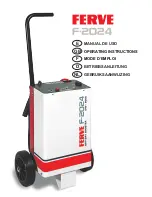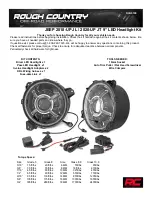
Do not use a rapid charging device to start the vehicle. If your vehicle's battery is discharged, the
engine can be jump-started from another vehicle or from a second battery using jump leads.
Observe the following points:
R
The battery is not accessible in all vehicles. If the other vehicle's battery is not accessible, jump-
start the vehicle using a second battery or a jump-starting device.
R
Vehicles with a petrol engine: only jump-start the vehicle when the engine and exhaust system
are cold.
R
Jump-starting may only be performed using batteries with a nominal voltage of 12 V.
R
Only use jump leads that have a sufficient cross-section and insulated terminal clamps.
R
If the battery is fully discharged, leave the battery that is being used to jump-start connected for
a few minutes before attempting to start. This charges the empty battery a little.
R
Make sure that the two vehicles do not touch.
Make sure that:
R
The jump leads are not damaged.
R
Non-insulated parts of the terminal clamps do not come into contact with other metal parts while
the jump leads are connected to the battery.
R
The jump leads cannot come into contact with parts which can move when the engine is running,
such as the V-belt pulley or the fan.
X
Firmly depress the parking brake.
X
Manual transmission: depress the clutch pedal fully and shift to neutral.
X
Automatic transmission: shift the transmission to position P.
X
Make sure the ignition is switched off. All indicator lamps in the instrument cluster must be off.
When using the key, turn the key to position 0 in the ignition lock and remove it (
Y
page 139).
X
Switch off all electrical consumers, e.g. rear window heating, lighting etc.
X
Open the bonnet.
Position number
B
identifies the charged battery of the other vehicle or an equivalent jump-starting
device.
314
Jump-starting
Break
dow
n
ass
is
tanc
e
















































